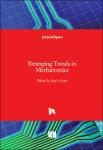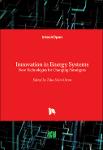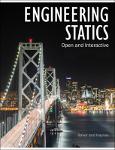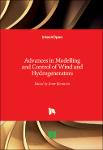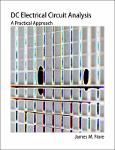Search
Author
- Amir, Ebrahimi (2)
- Aydin, Azizi (2)
- James, M. Fiore (2)
- Abdullah M., Asiri (1)
- next >
Subject
- công nghệ (3)
- Engineering (3)
- kỹ thuật (3)
- Robotics (3)
- next >
Search Results
The book presents new results of research advancing the field and applications of modulation. The information contained herein is important for improving the performance of modern and future wireless communication systems (CS) and networks. Chapters cover such topics as amplitude modulation, orthogonal frequency-division multiplexing (OFDM) signals, electro-optic lithium niobate (LiNbO3) modulators for optical communications, radio frequency signals, and more. |
Mechatronics is a multidisciplinary branch of engineering combining mechanical, electrical and electronics, control and automation, and computer engineering fields. The main research task of mechatronics is design, control, and optimization of advanced devices, products, and hybrid systems utilizing the concepts found in all these fields. The purpose of this special issue is to help better understand how mechatronics will impact on the practice and research of developing advanced techniques to model, control, and optimize complex systems. The special issue presents recent advances in mechatronics and related technologies. The selected topics give an overview of the state of the art and present new research results and prospects for the future development of the interdisciplinary fie... |
The demand for secure, affordable and clean energy is a priority call to humanity. Challenges associated with conventional energy resources, such as depletion of fossil fuels, high costs and associated greenhouse gas emissions, have stimulated interests in renewable energy resources. For instance, there have been clear gaps and rushed thoughts about replacing fossil-fuel driven engines with electric vehicles without long-term plans for energy security and recycling approaches. This book aims to provide a clear vision to scientists, industrialists and policy makers on renewable energy resources, predicted challenges and emerging applications. It can be used to help produce new technologies for sustainable, connected and harvested energy. A clear response to economic growth and clean ... |
This book aims to cover new technologies, methods, and approaches developed to meet: Traditional power systems are analog, unilateral, and mostly passive. New age power networks are smart, digital, incorporate communication for better operation, and involve collaborative decision-making. |
This book’s content should prepare you for subsequent classes covering Engineering Mechanics: Dynamics and Mechanics of Materials. At its core, Engineering Statics provides the tools to solve static equilibrium problems for rigid bodies. The additional topics of resolving internal loads in rigid bodies and computing area moments of inertia are also included as stepping stones for later courses. We have endeavored to write in an approachable style and provide many questions, examples, and interactives for you to engage with and learn from. |
Rapid deployment of wind and solar energy generation is going to result in a series of new problems with regards to the reliability of our electrical grid in terms of outages, cost, and life-time, forcing us to promptly deal with the challenging restructuring of our energy systems. Increased penetration of fluctuating renewable energy resources is a challenge for the electrical grid. Proposing solutions to deal with this problem also impacts the functionality of large generators. The power electronic generator interactions, multi-domain modelling, and reliable monitoring systems are examples of new challenges in this field. This book presents some new modelling methods and technologies for renewable energy generators including wind, ocean, and hydropower systems. |
This text is based on the earlier Workbook for DC Electrical Circuits, which it replaces. The original expository text has been greatly expanded and includes many examples along with computer simulations. For the convenience of those who used the Workbook, many of the problem sets are the same, with some re-ordering depending on the chapter. |
This text is based on the earlier Workbook for AC Electrical Circuits, which it replaces. The original expository text has been greatly expanded and includes many examples along with computer simulations. For the convenience of those who used the Workbook, many of the problem sets are the same, with some re-ordering depending on the chapter. |
Rapid deployment of wind and solar energy generation is going to result in a series of new problems with regards to the reliability of our electrical grid in terms of outages, cost, and life-time, forcing us to promptly deal with the challenging restructuring of our energy systems. Increased penetration of fluctuating renewable energy resources is a challenge for the electrical grid. Proposing solutions to deal with this problem also impacts the functionality of large generators. The power electronic generator interactions, multi-domain modelling, and reliable monitoring systems are examples of new challenges in this field. This book presents some new modelling methods and technologies for renewable energy generators including wind, ocean, and hydropower systems. |
The overarching aim of this open access book is to present self-contained theory and algorithms for investigation and prediction of electric demand peaks. A cross-section of popular demand forecasting algorithms from statistics, machine learning and mathematics is presented, followed by extreme value theory techniques with examples. In order to achieve carbon targets, good forecasts of peaks are essential. For instance, shifting demand or charging battery depends on correct demand predictions in time. Majority of forecasting algorithms historically were focused on average load prediction. In order to model the peaks, methods from extreme value theory are applied. This allows us to study extremes without making any assumption on the central parts of demand distribution and to predict... |


